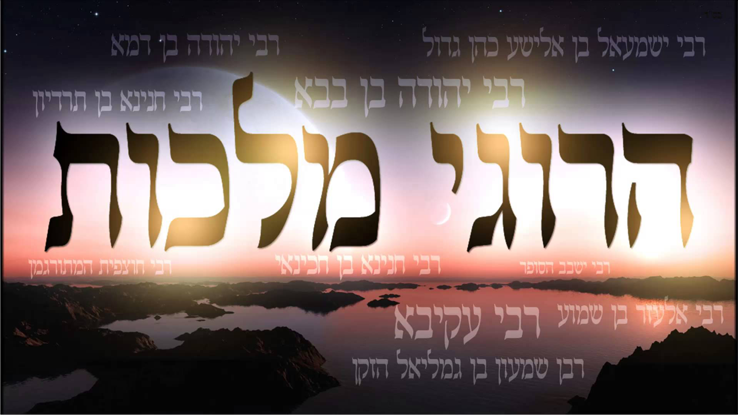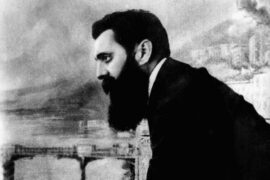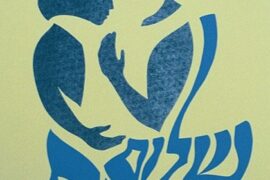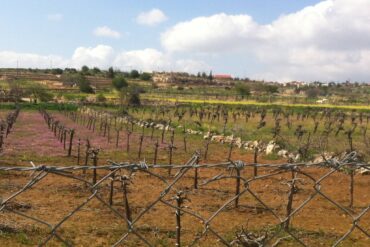In the traditional liturgy of Yom Kippur, one of the most striking moments in the Musaf service is the transition from the glorious description of the Temple service to the horror of its destruction on account of Israel’s sins.
This contrast is most sharply marked by the lighthearted song, mar’eh kohen, which recounts the glorious sight of the Kohen Gadol (High Priest) emerging from the Temple’s Kodesh haKodashim (Holy of Holies), and the lamentful poem eleh ezkera, which details the brutal executions of ten of Israel’s greatest sages at the hands of the Romans.
This sharp shift in tone makes eleh ezkera an especially poignant section of the Yom Kippur tefillot, especially in light of the underlying context of the destruction which the Roman occupiers wrought on our land.
We repeatedly say in our tefillot, “mipne ḥata’enu, gilinu me’artzenu” – “because of our transgressions we were exiled from our land” – and it’s these sins that we repeatedly atone for during Yom Kippur.
Interestingly though, in the words of eleh ezkera (“these I will remember”), the Romans justified their actions, even in the eyes of HaShem, as restitution for the sins of Yosef’s brothers who sold him into slavery to a band of Ishmaelites. The Roman governor obviously didn’t need a halakhic justification for murdering Jewish leaders. Being that he was the leader of an occupying force notorious for its brutality, this detail shouldn’t be taken as literal history.
Like much of Jewish historiography, the trope of cyclical history and timelessness contains a deeper message. Just as these brilliant sages suffered horrific deaths at the hands of the Romans in atonement for the sins of the sons of Yaakov millennia earlier, we suffer to this day due to the destruction wrought 2,000 years ago. Yet, we continue to sin, just as our forefathers did – every generation that does not bring about our redemption is culpable in the destruction of the Beit HaMikdash. As we say in the vidui: “aval anu v’avotenu ḥatanu” – “both we and our forefathers have sinned.”
In evoking the story of the ten martyred sages, eleh ezkera reminds us of the dire spiritual and physical importance of tshuva. Even on Yom Kippur, as we say that HaShem has offered to forgive us if we sincerely request it and don’t return to our earlier ways, we remind ourselves of our national responsibility in tshuva as well. As Rav Avraham Yitzḥak HaKohen Kook understands it, each Jew has the responsibility and the ability to engage in tshuva on behalf of the whole nation, an idea derived from the Talmudic tenet, “kol Yisrael arevim zeh bazeh” – “each member of Israel is responsible for one another” (Shvu’ot 39a).
Rav Kook asserts that tshuva has the power to elevate and restore the world, and everything in it, to Elokut – Godly perfection. Just as ten of our greatest sages took upon themselves the responsibility to atone for the sin of Yaakov’s sons with their lives, we must always strive to engage in tshuva for the Hebrew collective and not just for ourselves.
This idea is similarly brought forward in Parshat Nitzavim. The brit (covenant) that HaShem reaffirms with B’nai Yisra’el as they stand ready to enter the Land of Israel is “both with those who are standing here with us this day before the LORD our God and with those who are not with us here this day.”
Rashi explains this to mean that the actions of the current generation, who would enter Israel, would also set the tone for the countless future generations and their relationship with HaShem. The Me’ir La’aretz quotes the Arizal as teaching that those “not with us here this day” is the generation that would be born only in the days prior to the ultimate redemption. It is fitting that this parsha, which contains a hint of the trans-temporal nature of tshuva, is read the shabbat immediately preceding Rosh HaShana.
Tshuva is, in its essence, a process that transcends time. Just as the Beit HaMikdash and its service transcended the natural laws of space, Yom Kippur – as the most opportune time for tshuva – is a day above time, a Mikdash in time.
Just as we try to experience a fraction of the joy of the Temple service by the recounting the avoda during Musaf, so too do we relive the horror of eleh ezkera. It is of no true significance that the ten sages mentioned were not all killed at once. Despite the separation of some of the martyrs by a generation, with some having been killed during the destructive aftermath of Judea’s Great Revolt and others during the Bar Kokhba Revolt (and still others even later), the essence of the story is the total devotion each had to spreading and protecting the Torah and for being lions in the struggle to free their country from Roman rule.
While the accounts of their executions are horrific, every martyr reminds us of the power each one of us has to bring about Israel’s redemption. It is incumbent upon us to consider what we can do to improve ourselves and how we can take responsibility for helping each member of the Hebrew collective to reach their full potential through complete tshuva. And we must go even further – true tshuva elevates the entire world, not just in the present, but for all of eternity, bringing all of existence closer to the ideal of Elokut, as pure as the Kohen Gadol emerging from the Holy of Holies on Yom Kippur.





